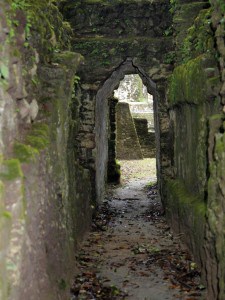
Ingredients:

As reported June 17, 2010
Cahal Pech is one of the oldest Maya sites in western Belize. Thirty four structures of the site were home to an elite Mayan family, and most of its construction falls within the Classic Maya period. Though habitation can be traced as far back as 900 B.C., recent excavations revealed plenty about the last inhabitants on the hill. News Five Jose Sanchez took a journey of discovery with Dr. Jaime Awe, Director, Institute of Archaeology, NICH, through the unwritten history of Cahal Pech.
Archaeological work at Cahal Pech began in 1988 and the site was made a reserve in the 90’s. While much has been uncovered during previous decades, new exploratory work has revealed equally amazing discoveries on the fringes of the site.
Dr. Jaime Awe
“Often like you rightly put it, we excavate some of the larger buildings because when people come to visit sites, those are the things that they want to see. So, we focus on them first. In the past, we decided that there were sections of Cahal Pech that we should perhaps spend some time looking at. And this area that we are in is on of those. About a year ago, we were excavating just opposite from where you’re looking at, and in fact you see all these stones, we found them covering this large tomb. you have to understand, you don’t find tombs in these small little places. You find tombs in the big pyramids. So we couldn’t believe when we came across that this tomb was lying out here.”
Jose Sanchez
“The dead do speak. By using carbon dating techniques and examining the type of pottery made during a particular period, Dr. Awe and his team were able to find out more about the life and death of the Mayans between 850-900 A.D.”
Dr. Jaime Awe
” The Mayan had laid this male individual inside this tomb with thirteen different pots all around him. There was a necklace made from dog teeth. We know that at least fifty-two puppies had to be killed to make that necklace.”
Jose Sanchez
” That means he was someone important.”
Dr. Jaime Awe
” Without a doubt this guy was well-to-do because he also had a nice jade pendant and some jade ear flares. Had had some obsidian blades – quite a bit of materials. And like I said, it was interesting because of where we found it. Another reason why it was very interesting is because of the date of that burial. That burial dates to close to between 850-900 A.D. This is a time when most sites have been abandoned. And it’s like we know that there are some people who are still clinging on here at Cahal Pech, don’t want to go.”
Jose Sanchez
” Would it be far-fetched to say the place was abandoned and they decided to live the remainder of their lives here?
Dr. Jaime Awe
“Oh, without a doubt. I think these people realized that this may have been the home of their ancestors, and they did not want to leave. Most people leave, but a few remain. They are hanging on. They are hoping that things will improve, and they are still trying to live a lifestyle like they did in the past, but eventually that also fails. They are not able to produce a lot of food, so there are some levels of malnutrition. They can’t come up with the type of technology to produce more, and then you get hit by drought. So the drought is the straw that breaks the camel’s back. It affects the production of food. It affects nutrition. People now start to compete for resources, which increases warfare. Eventually, the system couldn’t sustain itself and the system collapses.”
The greatness of the civilization continues to be written through each sift and shift of sand. Reported for News Five by Jose Sanchez.